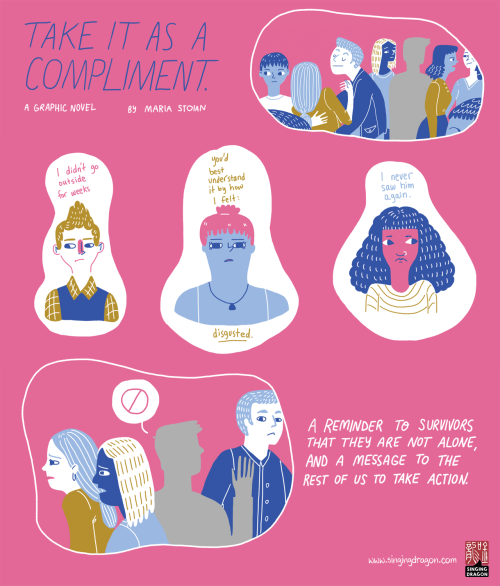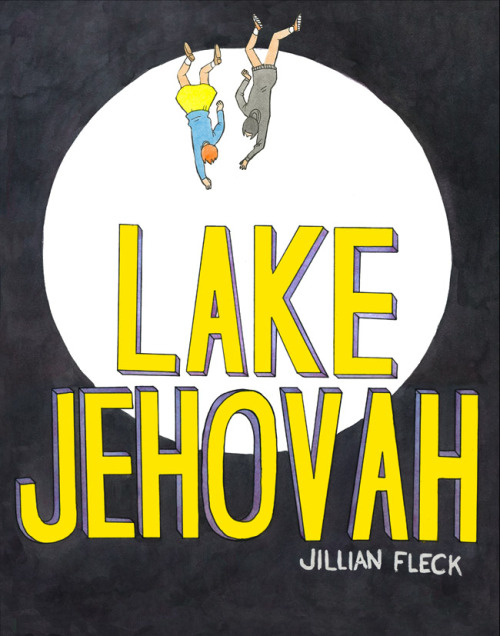“You got your medicine in my comics! You got your comics in my medicine!”
I was recently at the Graphic Medicine 2016 Conference: Stages & Pages held in Dundee, Scotland. I was there volunteering with the conference, speaking about my comics, and selling my work. It was quite a busy weekend and I’d like to share some of the things that happened there, and my thoughts about them. It has taken me a few weeks to decompress and reflect upon these experiences as the conference became a very energetic situation to meet new people and share ideas.
The Graphic Medicine 2016 Conference: Stages & Pages is a space to bring together comic artists, medical professionals, and patients. Graphic Medicine aims to explore the way comics can aid in the study and delivery of healthcare. Different from a regular comic convention, this conference included a broader range of individuals. There weren’t just comic artists who made comics about medical topics. There were art therapists, medical illustrators, doctors who reflected upon their practice through comics, comic academics focusing on medicine in comics, and activists inside the medical community. During my visit I saw presentations about academic research, performances, readings, workshops, artist talks, and medically themed comic work on display.
Before I arrived, I assumed that as a comic artist I would function more as a tag-along sideshow to the more legitimate medical conference, however I found myself to be mistaken. Unlike more purely academic comic conferences I have been to, there was an interesting mix between all these groups, and a respectful engagement between them.
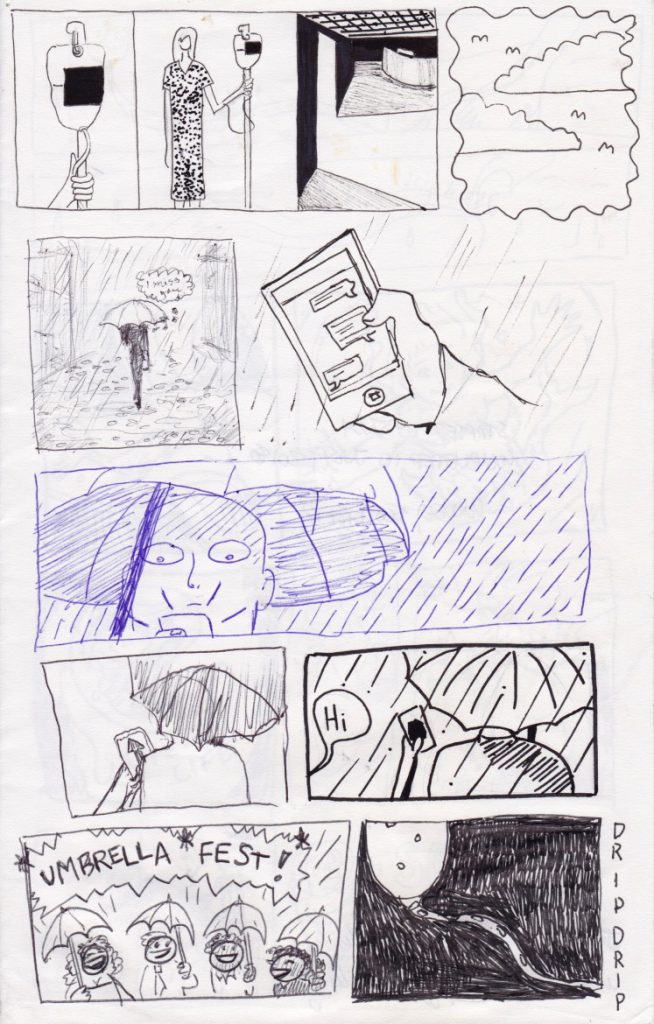
A researcher whose work I found particularly interesting was Yoko Yamanda, whose research looked into applying the Image Drawing Method, a therapeutic tool designed to help patients express the often difficult or impossible to convey emotional realities of living with illness. Yamandaʼs research applied the Image Drawing Method to examine the way patients with diabetes portray their relationship to their long term illness. One comic I found particularly affecting in this presentation was authored by an elderly man who could not draw, and represented himself in relationship to his past, present, and future as a single green line. The patientʼs explanation regarding why he chose this same mark shifted his dialogue regarding his illness from one of pessimism to hope. The shift in tone as his short comic progressed was a potent indicator of the power of storytelling in our everyday well-being.
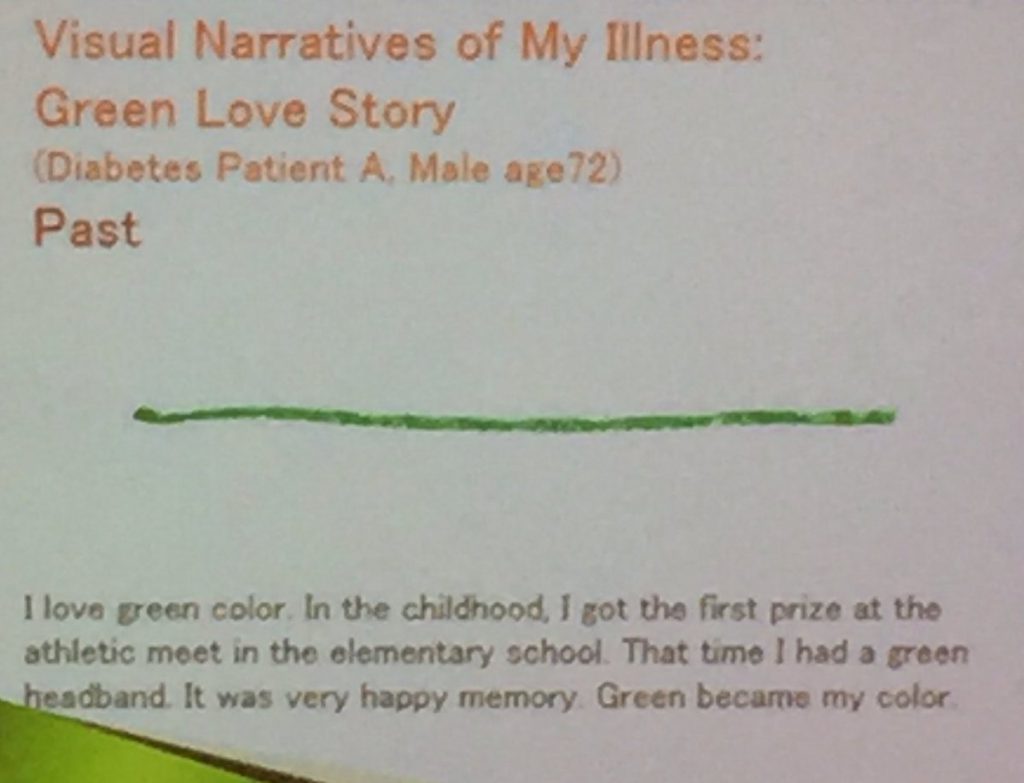
The conference included keynote speeches by veteran comic creators Lynda Barry and Al Davison, both of which were exciting and inspiring. I found that these speakers complimented one another greatly, as the key point they both seemed to be making related to the powerful magic at the heart of storytelling. Lynda Barry was also running workshops with Dan Chaon which, as expected, were a whirlwind manic magic episode that I wonʼt try to reproduce in words. Needless to say I would highly recommend something similar if you ever get a chance. Also I canʼt stop painting, someone help, I really need to get some work done.
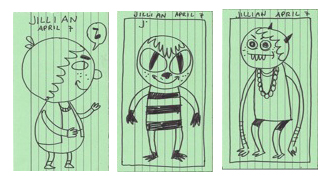
Maria Stoian was another artist who was at the conference to talk about her recent graphic novel Take It As A Compliment, an award winning collection of stories by survivors of sexual abuse, illustrated by Stoian. Her presentation dealt with the difficulties in representing perpetrators and survivors of sexual abuse. Inside the medium of comics, layered with itʼs fraught relationship to caricature, she searched for an honest representation of both of these groups without drawing generalizations. Stoianʼs presentation was very engaging, asking things like “how do you draw a rapist?”, a question that sounds easy enough to answer but quickly reveals underlying political and racial tensions.
Performing a reading of her soon to be released graphic novel Keeper of the Clouds, Evi Tampold really surprised me. Tampold is a young artist and storyteller who already has two graphic novels under her belt. Her first graphic novel The Hallway Closet deals with her own struggle with ADHD. Keeper of the Clouds was written by Liza Futerman and illustrated by Tampold, following Futermanʼs experiences with her mother and Alzheimerʼs. Meeting Stoian and Tampold was really great, theyʼre two really lovely Canadian comic artists who are great to chat with. Plus they helped me fold zines, so I owe both of them a coffee.
I gave a quick artist talk about representing anxiety and depression in my ghost drawings, Bad Thoughtz, and Lake Jehovah. I was a bit nervous about doing this as even though both mental states are clearly depicted in my work, I had never said it aloud before, at least not in front of a room of people. Despite this, the response I received from this short presentation was extremely welcoming and kind.
After the last keynote there was a brief comics market which was hilariously successful (for myself at least) despite all odds. I was selling small comic zines, which I had had printed for free (grad student perks), and tricked Stoian and Tampold into helping me construct. Despite having less than prime wares, only an hour and a half in which to sell them, and being constantly plied with glasses of cheap white wine by my friends, this was probably the most successful comics market I’ve ever sold at. This really weirded me out – I did not go into this market expecting to make a lot of money, let alone nearly sell out of cheap looking tiny zines. Hereʼs what I think happened:
- Diverse Audience – Unlike a straight up comic con this conference’s attendees didn’t just come for the comics. Quite a few individuals came to discuss their work which just happened to run parallel to the concept of comics, but never really dive in. These members of the audience were a lot more curious about comics culture because they weren’t already directly saturated in it. The conference had the unexpected effect of bringing a new and diverse audience to a comics marketplace that I had never seen before.
- Prior Introductions – The audience has just spent the last two days learning about medical comics and meeting artists. They were pumped to look at the books theyʼd spent so long discussing and read them for themselves. A lot of the people who came up to my table were enthusiastic about my presentation, and because we had that prior introduction it was much easier to talk to them.
- Cost of Production – As I mentioned before I used my dark grad student magic to procure free printing for the zines I was selling. This allowed me room to lower my prices from what I would normally charge, and to do zine trades and other fun things like that. Since I was less concerned about making my money back it was a pleasant surprise I made any money at all. I have no idea how to reproduce this good fortune outside of the university campus but it is something I will be working towards.
- Maybe Iʼm Just Really Friendly? – Or maybe it was just all that cheap, cheap wine. Regardless, even before this point I was humming along on that magic art juice after seeing Lynda Barryʼs keynote presentation (did you know she can sing with her mouth closed?). There was a really great vibe in the air that evening and even though I was really tired after a day of running around, presenting, and volunteering, I was more than happy to stand and chat with all the new people I had met that weekend.
In this way the Graphic Medicine 2016 Conference: Stages & Pages was a really interesting conference to attend, both as a comic artist and an academic enthusiast. There were a lot of interesting people to meet, both inside and outside the comics community. By bringing people together around the ideas expressed through a medium, rather than just the medium itself, this turned out to be a really fascinating experience. The conference blended different levels of academic, medical, and artistic engagement that allowed for a greater degree of communication and connection.
There is a bit of protest among comic artists regarding comic academics tendency to define the rest of us while standing comfortably from the outside. I think this model would be a great way to erase that tendency, by making spaces for artist to speak for themselves. I would love to see more conferences like this one, based around other ideas such as social justice, or environmentalism so that artists working in different themes and genres might be able to have a similar experience. In the meantime however, this was very interesting experience for myself and it has changed the way I think about the boarders of our own little comics world.
—————————————————————————————————
Jillian Fleck is a comic artist from Calgary, Alberta, currently studying comics at the University of Dundee, Scotland. Check out her work HERE.
